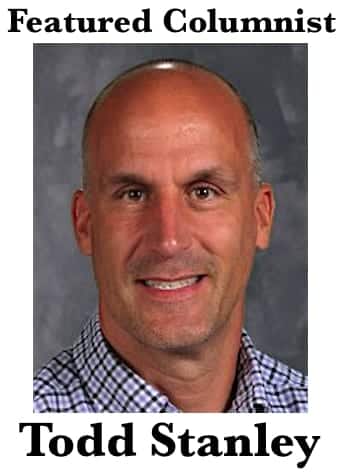Table of Contents
Professional development is a tricky thing. Districts are often times charged with the mammoth task of trying to provide PD for an entire building or even district. This can be a daunting order and pleasing everyone is never going to happen. There is the extra added challenge of trying to meet the district’s mandates as well as maneuvering around the union contract.
Why Professional Development
Because time is such a valued and rare commodity, some districts bring in a keynote at the very beginning of the year to perform from the stage. This person gets up and gives his or her routine, the people laugh, cry, ohh, and ahh as the speaker takes everyone through a roller coaster of emotions, and hopefully, at the end everyone applauds and leaves the auditorium with a renewed sense of purpose, never to see the speaker again. The question I always have is, what is the shelf life of this PD kick in the butt? How far does each teacher take this second wind and run with it? It, of course, varies. Some teachers use it to transform their classroom while others are complaining that they had to sit for an hour straight (even though that is what their students have to do all of the time), as well as everything in between. And yet some districts are paying tens of thousands of dollars for these speakers, not really measuring what sort of impact it has and whether there would be a better use of the money.
Implementing Professional Development
Then there is the sit and get. This is where teachers attend sessions where someone tries to fit an entire curriculum worth of lessons into a single one hour presentation. It would be the equivalent of trying to fit in an entire unit plan into a single class. Not only that, the format severely limits what the person can do. I remember a teacher came up to me after a PD and said, “I’m tired of being shown PowerPoints on how I shouldn’t be giving PowerPoints in class.” I’m as guilty as anyone. When I only have a short period of time, I often espouse a very non-traditional teaching strategy, using a traditional strategy to convey this. Nothing like getting up and telling people not to be a sage on the stage, as I deliver it as a sage on the stage.
Selecting the Right Session
There are conferences. This is usually a collection of speakers with a couple of keynote addresses centered around a central niche of education. These can be exhausting and overwhelming, though. By the time you get to the third speaker of the day, it is difficult to give your full attention. Not only that, trying to pick a session that is useful to you can be a challenge. The single paragraph descriptions that often accompany the conference program are not always reflective of what you are going to see. I often have buyer’s remorse when I get into a session and find it is not going to be useful for me, but I’m stuck.
You could do a book study. Trying to find a single book that can be useful to multiple people can be somewhat of a challenge. Add to the fact that not everyone is doing their reading (imagine if our students did that), and so the discussion cannot be as rich as it needs to be.
Hearing A Different Voice
Of course, in many cases, you have the professional development you need already in your district. Certainly, there are enough talents amongst the staff to be able to provide strategies and ideas for others to use in their classroom? The problem here is the 50 mile rule. The 50 mile rule is that the best professional development has to come from at least 50 miles away. This is not a truth, mind you. It is a perception. If someone who has been in the district for a while, whose voice has become familiar to those in attendance, gives the advice, it might just sound like Charlie Brown’s teacher. However, if a perceived expert comes in, says the exact same thing the district person was going to, all of a sudden it is Moses decreeing the commandments from Mount Sinai. It is just like bringing in a guest speaker to your class. He says something, and suddenly the voice is different, and the students pay attention more.
Understanding the Roadmap
Even the best laid plans, the most highly regarded speaker, or the hottest inspirational book will not reach everyone, just as the one size fits all strategy would not work in the classroom. And yet districts are charged with the task of trying to make it fit. When done building-wide, there is always that satellite group of teachers that the PD does not work for. This usually involves the related art teachers as the gym teachers don’t really need to know how to write an effective assessment. It is interesting as we try and differentiate for different learners in the classroom but don’t always do a bang-up job with our various teacher groups.
Basically, all of the struggles of trying to find effective professional development are the same struggles we face in the classroom trying to teach our students. Let’s take a page from an effective classroom then and figure out which PD would be the best. In a classroom, students learn when they are engaged, when they care about what they are learning, and when they have choice.
What Works
What that would look like is allowing the teachers themselves to choose what professional development would be meaningful to them. To individualize the lesson. Ultimately, it shouldn’t be up to your district to find and provide your professional development. You became a teacher in most cases because you love to learn and you wanted to share that love with others. Why not learn about something that will improve your craft and make you a better teacher? Some districts would argue the accountability piece. That if the district doesn’t monitor the professional development, teachers will take advantage of it. I say so what. Forcing that teacher is not going to make it any better. In fact, they will probably fight you more vigorously. The district should simply provide the time and space to conduct the PD and let the teachers develop it themselves. Then the only person they can blame for it sucking would be themselves.
Read more from Todd at Stanley at edCircuit and The Gifted Guy.
Subscribe to edCircuit to stay up to date on all of our shows, podcasts, news, and thought leadership articles.



